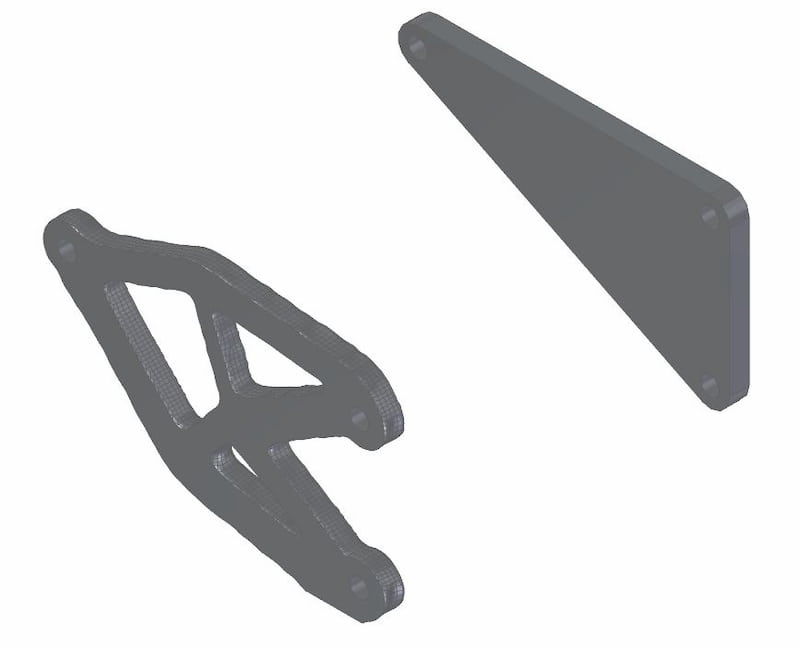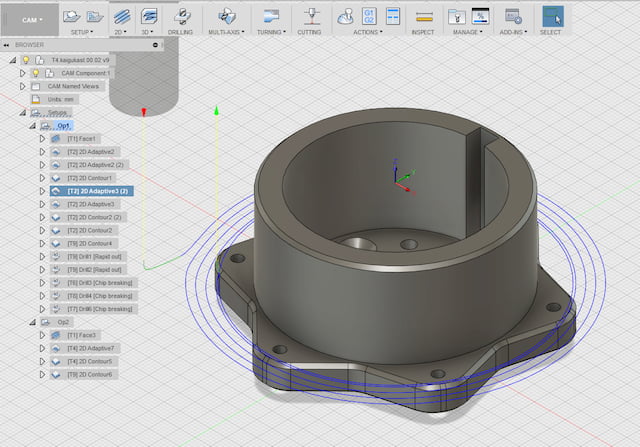In recent years, many computer-aided methods have been developed to find the most optimum design for a problem. These intelligent techniques have allowed engineers to create designs that were beyond what we could come up with manually. One of these methods is topology optimisation.
Topology optimisation (TO) is a computer-based design method used for creating efficient designs today. Fields such as aerospace, civil engineering, bio-chemical and mechanical engineering use this method proactively to create innovative design solutions that will outperform manual designs.
What Is Topology Optimisation?
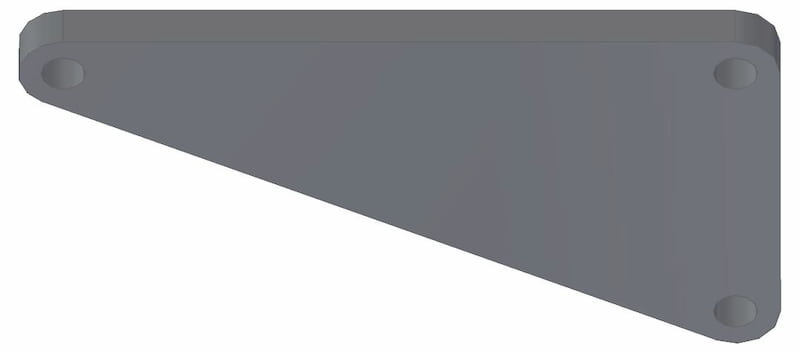
Topology optimisation is a mathematical method used at the concept level of design development. The aim of this method is to spread the amount of material present more effectively over the model. It takes into account the boundaries set by the designer, applied load, and space limitations to create a design.
简而言之,拓扑优化3 dmodel and creates a design space. It then removes or displaces material within it to make the design more efficient. While carrying out the material distribution, the objective function does not take aesthetics or the ease of manufacturing into account.
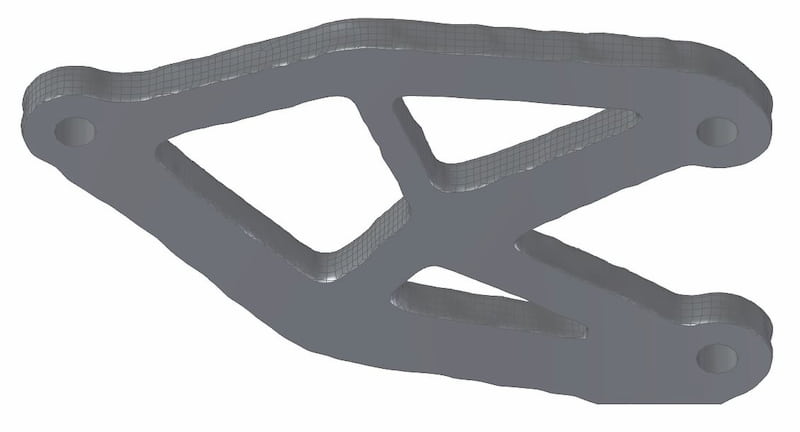
At the very least, the method needs us to provide the magnitude of loading and the constraints within which it should operate. Using this information, the optimisation algorithm creates a possible load path using the minimum amount of material.
Once a design is finalised, we use additive (and sometimes subtractive) manufacturing methods to produce the part. As the name suggests, in additive manufacturing (here on out referred to as AM), the material is added (e.g. 3D printing) bit by bit until the final model is complete.
AM is capable of creating complex shapes and structures that may be extremely difficult to create using other methods. This is why we prefer it for creating complex products that emerge after optimisation.
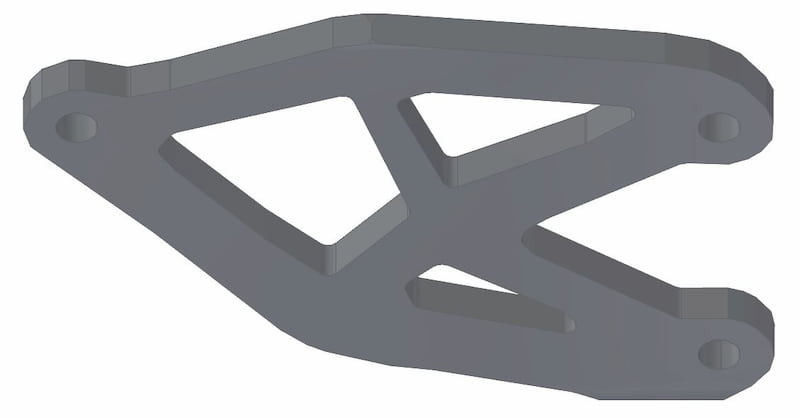
Sometimes, however, the design suggested by topology optimisation is too complex even for AM. In such situations, we make small changes to the design to improve its manufacturability.
How Does It Work?
Topology optimisation is carried out on an already existing model. We can choose to optimise an entire component or elements of it. This area of focus is known as the design space.
Topology optimisation uses finite element analysis (FEA) to create a simple mesh of the design space. The mesh is analysed for stress distribution and strain energy. This informs the system about the amount of loading the different sections are handling.
While some sections will have optimal material distribution, there will be some that could use trimming. Sections with low strain energy and stress level are marked using the finite element method. Once all the inefficient sections within the design space are identified, the objective function gradually removes the material.
During this trimming process, the system will also check how much the overall structure is affected by the removal process. If the removal process compromises its integrity, the process stops and the material in that region is retained.
Before running the TO algorithm, we set the amount of material we intend to remove as a percentage of the total material. For example, we may set the target material reduction percentage at 50%.
The system removes the excess material in stages. At every stage, it checks the structure for stress levels by reiterating the element distribution until it reaches the target percentage.
Get your manufacturing quote in seconds
Quote in seconds
Short lead times
Delivery by Fractory
Benefits
Topology optimisation improves upon several challenges at a time. Let’s see what advantages TO has to offer.
Create cost and weight effective solutions
The most attractive benefit of topology optimisation is its ability to reduce any unnecessary weight. Size optimisation means that less raw material is needed.
额外的重量也会对能源效率产生负面影响。零件的运输成本也将增加。所有这些优点直接转化为实际的成本节省,这在竞争市场中很重要。
A great example is how通用电气用于将发动机支架的重量减少84%. This modification in a small part saved the airlines nearly $31 million dollars by improving the overall energy efficiency.
A faster design process
由于设计限制和性能期望是在构想的早期阶段所考虑的,因此不需要花费的时间就不那么多时间来提出最终的设计。
A faster process also means a shorter time-to-market duration which is especially important for new products in a competitive market.
Sustainability
TO prevents undue material wastage. The algorithm is capable of creating sustainable building systems while still being rooted in sound structural logic. Also, as mentioned earlier, topologically optimised products save fuel through weight reduction.
随着对可持续替代方案的需求的增加,由于其环境友好的性质,制造业领域越来越多的行业正在采用。
缺点
There are some topology optimisation problems that we must know about in order to use it effectively. Let us see what they are.
Production limitations
The designs that TO comes up with can be difficult to manufacture. Given that AM is quite flexible in terms of what it can manufacture, it is still necessary to check for manufacturability prior to finalising the design.
If we try to solve the topology optimisation problem thinking only about the function, it is possible that we may fall short when it comes to our build quality and efficiency.
It is worth noting here that a few software vendors offer a feature called manufacturing constraints for TO. Thus, it is possible to create parts that are only manufacturable using conventional methods.
高成本
最近,我的成本减少了但仍然a notch above traditional production methods. We need to consider the cost to benefit ratio on a case by case basis.
For mass production, creating injection moulds is a possibility. Therefore, we can look further than 3D printing for creating plastic parts.
For making a few components on and off, AM could prove expensive which is a deterrent in most cases as the investment is too high. In such cases, it will be more beneficial to outsource the production to a 3D printing service company.
拓扑优化的应用
Many industries are now looking towards advanced design methods like topology optimisation andgenerative design. Although the production of parts may be costlier, there are important advantages on offer.
Aerospace, medical and automotive industries are some of the ones looking for assist from these mathematical modelling methods.
Aerospace
Air travel is costly. Since the very beginning, attempts have been made to reduce the mass of an aircraft as far as possible without compromising its strength.
Topology optimisation helps analyse aircraft components in detail to chop off unnecessary component mass. This means an aircraft can carry more cargo (or use less fuel) on the same journey.
The same benefits apply to satellites and rockets. This mathematical method helps reduce support structures and create lighter parts while retaining their original strength.
Medical
In the medical field, topology optimisation creates highly efficient implants and prosthetics. Using the algorithm, we can create parts that imitate the bone density and stiffness of the patient. It further takes into account the patient’s anatomy and the designed part’s activity level and the load applied.
The optimization improves the part’s endurance limit. Where feasible, the algorithm will replace the solid structure with lattice. This reduction in weight is a welcomed benefit for implants/prosthetics.
Automotive
Some automobile makers are now using TO for designing structural (chassis) as well as machinery components. This technology has helped in reducing the mass of the body skeleton while maintaining (and even improving in some cases) the overall strength of the initial product.
Now, in addition to composites and adhesives, steel is finding more applications due to the possibility of creating complex lattice structures using AM.
Manufacturing Methods
Topology shape optimisation can create complex structures that have the best stiffness to weight ratio while using minimum material. They may be manufactured using additive as well as subtractive manufacturing processes.
AM does give a large amount of freedom to the designer but where flat products are concerned, advanced subtractive manufacturing methods can create parts with complex geometry just as effectively.
每种方法都会对元素的拓扑和几何形状施加不同的制造限制,以及生产过程的创建方式。一些可以生产这些创新解决方案的优秀方法是:
3D printing
3D printing has been instrumental in bringing topology optimisation to the limelight. Without additive processes, it is nearly impossible to create the complex structures designed by many other optimisation techniques, especially generative design, in addition to TO.
3D printing offers a fast and efficient way to create topologically optimised products with little to no wastage. There are many advantages to 3D printing and very few limitations. Among the limits of 3D printing is that only a handful of metals can be used with it as it was originally designed for plastics.
CNC machining
As the use of TO became widespread, efforts were made to add features to computer programs that allow traditional production methods to create these components.
As TO creates hollow structures with support structures of non-uniform thickness, it is difficult to useCNC machiningfor intricate components. But for models where the visual capacity overlaps with Vmap (Visibility map) completely, the part is manufacturable with CNC.
可见性是生产中定义的概念,以了解特定过程创建特定部分的能力。在实际的过程中,如果表面上没有任何点在过程方向上隐藏,则据说一部分是可见的。不用说,与3轴CNC机器相比,一台5轴CNC机器将能够制造出更大难度的产品。
万搏app全民彩票平台
Laser machining can also work as a production process for TO products. This method is capable of cutting intricate shapes with enviable accuracy.
万搏app全民彩票平台can be used on several different materials (metals, wood, acrylic, MDF) making it more useful when subtractive manufacturing is possible for a TO part.
Topology Optimisation Software
There are over 30 software products available in the market for TO which come with their own tradeoffs. Some programs are more popular than others for their holistic approach towards the technique. Let’s take a look at some of them.
Ansys Mechanical
Ansyscreates design solutions for multiphysics engineering simulation. The Ansys Mechanical software comes preloaded with structural topology optimization features. This program can analyse and optimise simple as well as complex design spaces and make corrections where needed.
It comes with features such as:
- Modal analysis of multiple static loads.
- Control options for setting minimum material thickness.
- Ability to work with planar and cyclic symmetry.
- Easy validation of results.
Altair Inspire
Altair’s Inspireis a powerful tool when it comes to topology optimisation. It also features added capabilities such as generative design andrapid prototyping.
The program is easy to master and provides important features such as:
- Capable of generating mixed support structures having solid as well as lattice geometry. These files can be observed in 3D and can be sent directly to a 3D printer for production.
- Ability to interact and assign new loads to the structure besides being capable of running predetermined loads that can be imported/exported for analysis.
- Ability to reduce overhangs to encourage more self-supported structures.
Solidworks
Solidworksadded TO features in its 2018 update. This is a widely used computer program for CAD applications and the introduction of TO has been quite smooth and efficient.
Solidworks also uses the subtractive method where it chisels away material to reduce mass and improve stress distribution.
The distinct features of the Solidworks TO module are as follows:
- Ability to bring optimized designs into a CAD environment using multiple methods.
- The availability of various partner products.
Conclusion
我的进步使我们能够创建非常complex shapes with relative ease. To take full advantage of these leaps in production capabilities, we need technologies like topology optimisation.
非常擅长优化设计的解决方案。有时,这可能会失控一些,特别是如果您仍在学习绳索。但是,可以控制许多因素将模型转移到更有利的结果。
其中一些控件包括限制设计空间中的成员大小,要求对平面的对称性或最终模型的易位性。您还可以操纵材料去除百分比,以控制算法将优化零件的质量。


